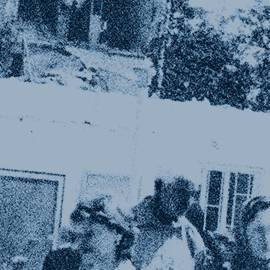The story of a woman speaking about the murder of people in the Staropromyslovsky District and the removal of corpses by relatives
Place of interview: unknown
Interview date: unknown
On around February 25, 2000, the interviewee left her children with her mother in the village of Proletarsky (at the former state farm named after the 60th anniversary of the October Revolution), and travelled to the Staropromyslovsky District. At a Russian post, she was told that the city had been cordoned off as it was a limited access zone. Passers-by told her that corpses were lying on the streets in the city. She was not able to enter the city center, but she had met a neighbor who told her that not a single living soul was visible on the streets, but rather corpses lay everywhere. These were corpses of the Russian military, Chechen fighters, but mostly of civilians.
The interviewee herself had also seen a number of corpses on Korolenko street. Her travelling companion had approached the body of one girl and examined that she had been approximately 12-years-old, had a mutilated face, was missing both her eyes and was lying in an unnatural position. The witness herself was too afraid to approach the body, but observed from a close distance whereby it was possible to determine that she was looking at the body of a child. The interviewee also saw the corpses of three other victims: two women and a man. She stated that all three were Chechens.
Comment from the Natalia Estemirova Documentation Center: the events described relate to the period ending the hostilities over the city of Grozny. The Staropromyslovsky District, which had already been largely occupied in December 1999, held the rear of the Russian troops for a month and a half as they attempted to drive Chechen fighters from their defended positions. During this time, dozens of residents, including entire families, were killed in villages and on the streets of the District. When those who had remained in the city (including the interviewee) were given permission to enter this area to search for their missing relatives and inspect the damage to their homes, the bodies of the victims still remained where they had been killed in the streets, yards and in the basements of houses. The corpses also became prey for feral cats and dogs.
